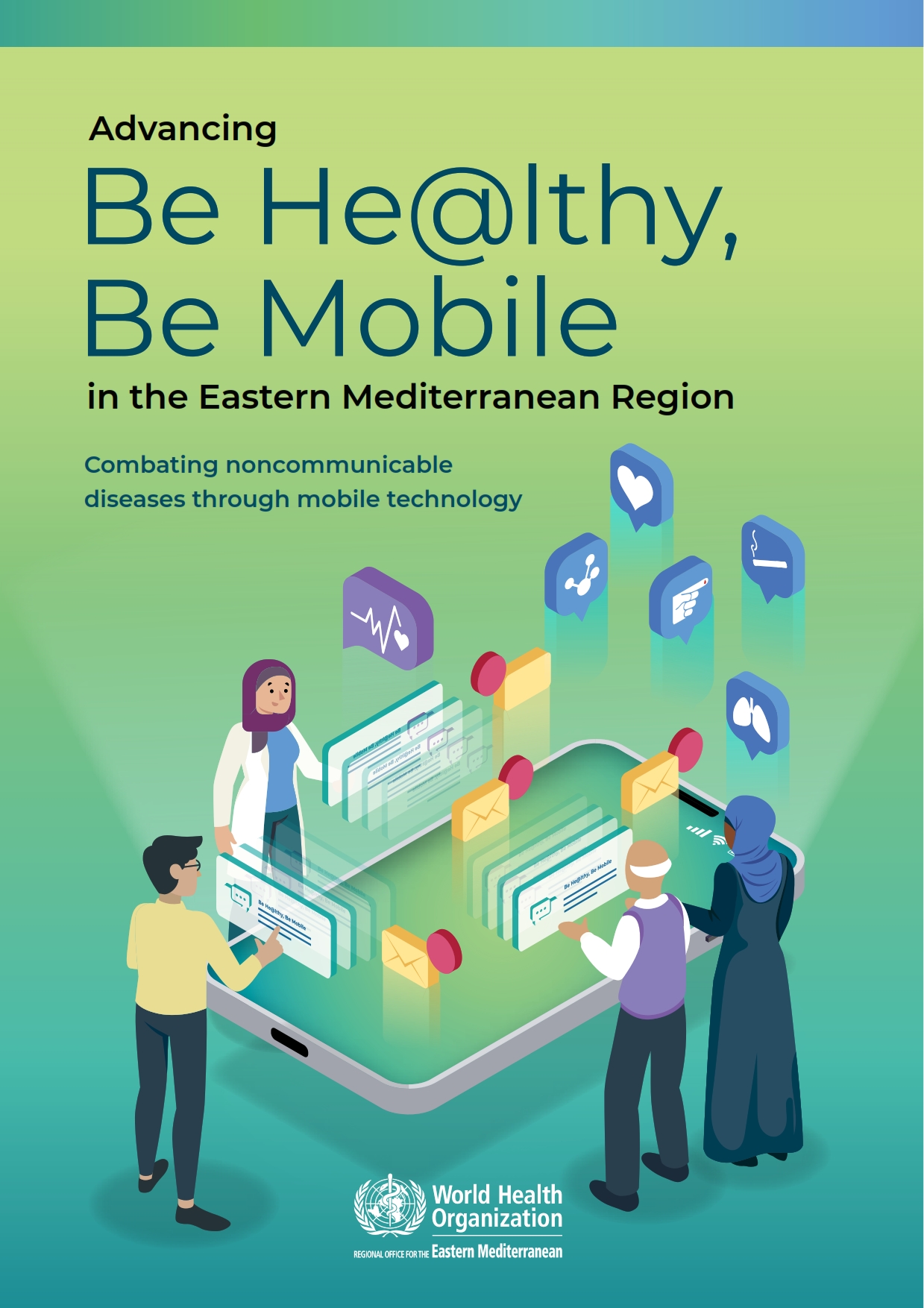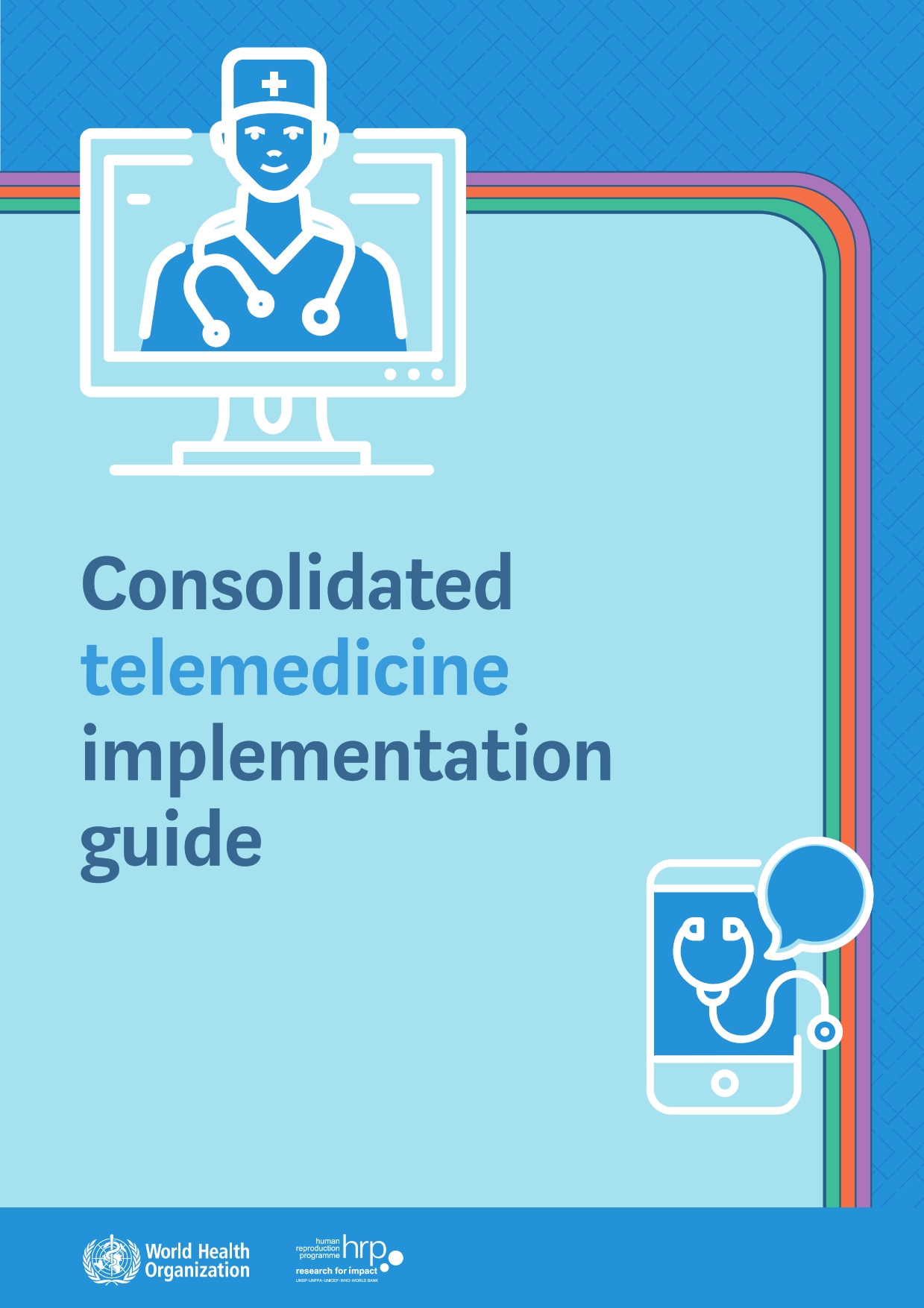Digital health
The use of digital health interventions has the potential to improve healthcare delivery and sustainability, bringing about many exciting advancements in the treatment and management of noncommunicable diseases (NCDs). Despite the continuous need for services by people living with NCDs, factors such as distance, cost, mobility, displacement and emergencies can compromise service delivery. The pandemic has only worsened the situation, as health facilities were occupied with COVID-19 patients and NCD patients were required to stay home to avoid severe symptoms, increasing stress and anxiety at a time when mental health services were also affected.
However, the 21st century's challenges have led to the development of digital health innovations, like the 2012 Be He@lthy, Be Mobile initiative launched by the World Health Organization (WHO) and the International Telecommunication Union (ITU), using mobile phone technology to help governments scale up ‘mHealth’ services for NCDs and their risk factors. The pandemic has furhter accelerated the use of digital health interventions, including hotlines, online assistance, mobile phone apps, and many more. These innovations have shown potential in reducing the interruption of NCD and mental health services, making it necessary to continue scaling up digital health technology.
To fully engage with this promising future, partnerships between governments and the private sector, academia, IT specialists, and other stakeholders are needed, along with the development of a regulatory framework for successful joint ventures. This includes scaling up the use of digital health interventions within health systems and exchanging experiences with other countries.
In 2018, WHO Member States approved a resolution on Digital Health, recognizing the value of digital technologies in providing healthcare access without financial hardship. Taking action in this area is crucial in reaching the 2030 goal of reducing premature deaths from NCDs by one third and promoting mental health and well-being.
While digital technology should not replace in-person consultation, it is crucial in times of crisis and will continue to provide healthcare access where it is limited or unavailable. Collaboration between public and private sectors, people and technology, is necessary to create a healthier future for all.
Mobile health (mHealth)
The use of mobile technology for public health purposes is known as mobile health or mHealth. It helps to prevent, manage and treat noncommunicable diseases (NCDs) and their risk factors by offering both health care support to patients and technical support to health providers. This includes the use of text messages and mobile phone applications.
To combat the impact of NCDs, mHealth should be considered a component of a broader NCD strategy, not a standalone programme. The convenience and broad reach of mobile phones make it an ideal tool for mHealth, as nearly everyone has access to a mobile phone and the coverage extends to even remote areas. mHealth aims to: promote health literacy; improve NCD prevention; improve disease self-management; educate patients; directly provide services to patients; offer technical support; and help governments in the implementation of national NCD policies.
To be successful in implementing mHealth, several key factors must come into play, including: a supportive environment; partnerships; governance and programme management; resource allocation; toolkits and handbooks; health and technical content; monitoring and evaluation; sustainability; and effective communication, advocacy and promotion.
Be He@lthy, Be Mobile (BHBM)

Be He@lthy, Be Mobile (BHBM) is a global mobile health (mHealth) initiative led by WHO and the International Telecommunication Union (ITU). Its goal is to assist governments in utilizing mobile technology to tackle key health issues and support ongoing national health efforts for disease prevention, management and treatment. BHBM aligns with WHO's global and regional visions, its 13th General Programme of Work, and the 2030 Agenda for Sustainable Development, particularly Sustainable Development Goal 3, which aims to "ensure healthy lives and promote well-being for all at all ages".
Since its launch in 2013, the initiative has reached 3.7 million users by providing evidence-based behaviour change information, and has helped governments integrate digital health services into existing health systems, through 16 programmes in 12 countries.
BHBM has developed guidance handbooks that offer evidence-based programme content in various health areas, including mDiabetes, mTobaccoCessation, mAgeing, mBreatheFreely, mCervicalCancer and mTB-Tobacco. Initially focused on NCD prevention, BHBM has broadened its scope to other health topics while still supporting NCD programmes. It has also played a crucial role in supporting WHO and countries in responding to the Ebola virus disease and the COVID-19 pandemic. BHBM's platform has been used to provide reliable information on COVID-19 to millions of people through SMS messages and mobile applications and can also be used to ensure NCD essential services continue during the pandemic, such as disease prevention and management, health promotion and complication prevention.
Telemedicine

Telemedicine, which involves providing healthcare services remotely, has the potential to improve clinical management and expand access to services. The COVID-19 pandemic has intensified interest in telemedicine, leading to a growing demand for its implementation. The Consolidated telemedicine implementation guide offers a comprehensive overview of the steps and factors to consider when implementing telemedicine, combining insights from the COVID-19 pandemic and WHO resources from the past decade. The goal of this guide is to be a constantly evolving resource, helping countries at various stages of their telemedicine journey by providing a detailed investment plan and supporting them in the planning, implementation and maintenance processes.
Digital innovation stories during COVID-19



